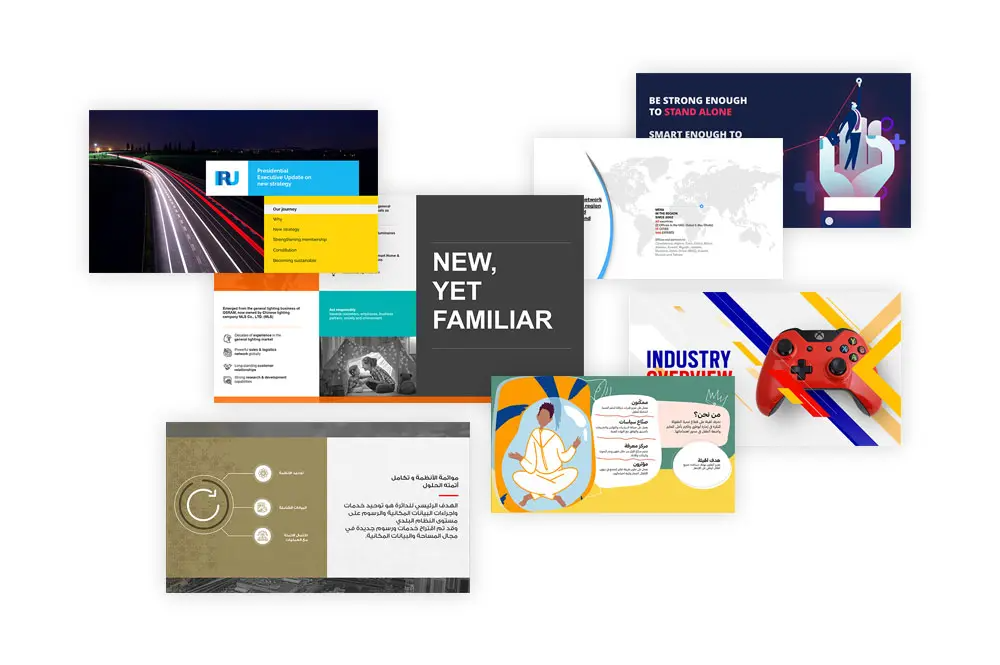
A well-crafted presentation deck has the power to captivate and convey information with impact. Elevating your presentation deck design goes beyond aesthetics; it involves strategic choices that enhance engagement and effectively communicate your message. This piece of writing gets into key elements to consider when aiming creating brilliance in your presentation design.
Visual cohesiveness:
A visually cohesive presentation design reinforces your message and leaves a lasting impression. Maintain consistency in color schemes, fonts, and imagery throughout your slides. This consistency enhances the professional appearance of your deck and also helps guide your audience through a smooth visual narrative.
Strategic use of imagery:
Incorporate high-quality and relevant imagery to complement your content. Striking visuals can evoke emotions, making your presentation more memorable. Be mindful of copyright regulations and choose images that resonate with your message, adding a layer of authenticity to your narrative.
Minimalist design principles:
Embrace minimalist design principles to declutter your slides and focus attention on key elements. Avoid overcrowded layouts and excessive text. Instead, opt for concise content, strategic white space, and impactful visuals. A clean and uncluttered design enhances clarity and ensures that your audience remains engaged.
Effective use of typography:
Typography is a powerful tool in presentation design. Choose fonts that align with your brand or message and maintain readability. Use font size and weight strategically to emphasize key points, and consider employing varied typography for headers, subheadings, and body text to create visual hierarchy.
Interactive elements:
Incorporate interactive elements to engage your audience actively. Utilize clickable buttons, hyperlinks, or navigation menus to create a vibrant and immersive experience. Interactive elements break the monotony of traditional slides and also encourage audience participation.
Data visualization techniques:
When presenting data, use effective visualization techniques. Use charts, graphs, and infographics to distill complex information into easily digestible visuals. Ensure clarity in data representation, and highlight key insights to facilitate understanding.
Storytelling approach:
Infuse a storytelling approach into your presentation to create a narrative that resonates with your audience. Structure your content with a clear beginning, middle, and end. A compelling story adds a human touch to your information, making it more relatable and memorable.
